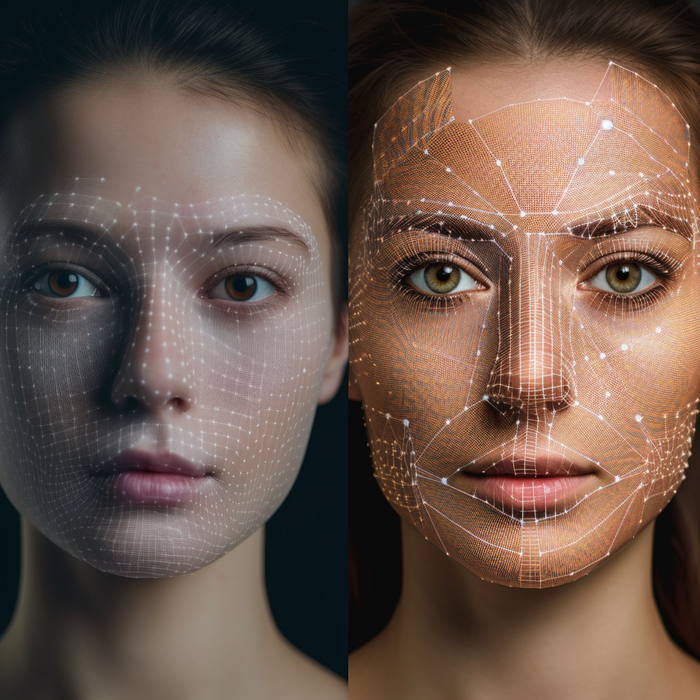Introduction
Facial recognition technology is quickly transforming various sectors, including law enforcement and security. However, its growth has prompted legal and ethical concerns across the United States. Different states are now implementing varying degrees of regulation. As a result, the landscape of facial recognition laws is becoming increasingly complex. This article aims to explore the current state of these laws across the nation.
The Rise of Facial Recognition Technology
Evolution of Facial Recognition
Facial recognition technology has evolved significantly since its inception. Initially, it was a tool primarily used for research and experimental purposes. However, as algorithms improved, its applications expanded into everyday life. Today, facial recognition is commonplace in smartphones, social media platforms, and security systems. Consequently, businesses and governments are incorporating this technology for various purposes.
Despite its benefits, the technology has raised significant ethical concerns. Critics argue that facial recognition can be misused, leading to unlawful surveillance and data privacy violations. Furthermore, there is a growing concern over inaccuracies in identifying individuals, particularly among marginalized groups. Given these issues, it’s essential to consider the legal framework surrounding facial recognition across different states.
State Responses to Ethical Concerns
In response to the ethical dilemmas posed by facial recognition, several states have begun to enact legislative measures. These regulations generally aim to ensure transparency and promote accountability. For instance, some states have restricted the use of facial recognition technology by law enforcement agencies. Such measures often require law enforcement to obtain a warrant before using the technology. This approach allows individuals to retain greater control over their personal data.
Moreover, states like California have established guidelines to govern how businesses can use facial recognition. Such guidelines may include requiring users to consent before their data can be collected. This turn towards regulation indicates a growing legislative trend focused on balancing innovation with ethical considerations. Therefore, staying informed on these laws is vital for both citizens and organizations.

Variations in State Regulations
States with Robust Regulations
Some states have taken substantial steps to regulate facial recognition technology. California, for instance, has numerous laws in place. The California Consumer Privacy Act (CCPA) mandates that businesses disclose their data collection practices. This transparency helps individuals understand how their data is being used.
Similarly, Massachusetts has enacted laws requiring law enforcement to minimize the use of facial recognition. The state mandates that such technology can only be employed under strict conditions. These rules include acquiring a warrant to use facial recognition in investigations. Consequently, these regulations serve to protect citizens while enabling lawful oversight.
Moreover, Illinois has adopted a unique law known as the Biometric Information Privacy Act (BIPA). This legislation requires businesses to obtain informed consent before collecting biometric data. As a result, Illinois has become a benchmark for other states seeking to regulate facial recognition technology. The comprehensive nature of these laws illustrates a proactive approach to privacy and public safety.
States with Minimal Regulations
On the other end of the spectrum are states with minimal to no regulations concerning facial recognition technology. In states like Texas and Florida, laws governing the use of facial recognition are significantly less stringent. Although there may be some legal guidelines, they are often vague and open to interpretation.
In such states, law enforcement agencies may have greater leeway in utilizing facial recognition. For instance, there may not be a requirement to obtain a warrant before deploying this technology. Consequently, privacy advocates express concern that such loopholes can lead to unwarranted invasions of privacy. Without robust regulations, individuals might find themselves subject to indiscriminate surveillance.
Moreover, the lack of clear guidelines can hinder public trust in regulation. Citizens may become wary of how their data is being used and might feel powerless to protect their privacy. Therefore, the disparity among states concerning facial recognition laws continually presents a pressing issue that demands attention.

The Impact of Federal Legislation
The Role of Federal Standards
While state regulations vary widely, the prospect of federal legislation looms significantly over facial recognition technology. Policymakers at the national level are increasingly recognizing the need for a unified approach to governance. A lack of consistency among state laws can create confusion for businesses and citizens alike. Without federal clarity, organizations may struggle to comply with differing regulations across state lines.
Several lawmakers have introduced bills aimed at establishing federal standards for facial recognition technology. Such legislation would ideally address ethical concerns, transparency, and privacy. Federal standards could also set criteria for the use of facial recognition by law enforcement agencies. The goal is to balance public safety with individual privacy rights.
However, achieving consensus on a federal level is challenging. Lawmakers often disagree on the extent of regulation necessary. Some argue that stringent regulations may hinder technological advancements. Conversely, others believe current practices are insufficient to protect individual rights. Hence, the debate on federal legislation continues, influencing how states approach facial recognition laws.
Implications for States
The advent of federal legislation would significantly impact facial recognition laws at the state level. For instance, states with stringent regulations may be compelled to adjust their laws to comply with federal standards. This could lead to a more unified approach across the country, benefitting both businesses and consumers.
Moreover, federal guidelines could provide a framework within which states can operate. This would help eliminate ambiguity and create consistency in the legal landscape. If federal standards are established, they may address key concerns such as accuracy, accountability, and oversight. Consequently, states would have clearer guidance on implementing their regulations surrounding facial recognition technology.
However, states will still retain some level of autonomy in crafting their laws. If federal regulations are considered too lenient, states may choose to enforce stricter measures. Thus, the interplay between federal and state regulations will be critical in shaping the future of facial recognition in the United States.
Legal Cases and Precedents
Significant Court Rulings
As facial recognition technology becomes more prevalent, legal cases are increasingly shaping the regulatory landscape. Courts are beginning to address issues surrounding privacy and government surveillance. For example, a New Jersey court ruled against facial recognition use due to concerns about lack of oversight. This precedent emphasizes that individuals have the right to privacy, even in public settings.
Additionally, challenges under the Biometric Information Privacy Act in Illinois have gained significant attention. Several lawsuits focus on how companies collect and store biometric data. Courts have ruled in favor of individuals whose privacy rights were allegedly violated. Such outcomes could influence how other states approach facial recognition legislation.
Implications for Future Cases
These legal precedents are likely to impact future cases involving facial recognition technology. As courts continue to evaluate the legality of its use, specific rulings may set the tone for future legislation. Legal challenges could arise concerning the degree of consent required for data collection. Consequently, states may feel pressured to revise existing laws to align with judicial findings.
Moreover, as public awareness of facial recognition technology grows, so does the potential for litigation. Individuals may be more inclined to challenge violations of their privacy rights. This heightened scrutiny could lead to more states enforcing stricter regulations. Thus, the ongoing legal discourse surrounding facial recognition will play a crucial role in shaping its future.

Conclusion
In summary, facial recognition technology is rapidly changing the landscape of privacy and surveillance. State laws differ significantly, revealing a patchwork of regulations. While some states have adopted robust measures to protect citizen privacy, others remain largely unregulated. This inconsistency underscores the pressing need for clearer legal frameworks.
Moreover, the potential impact of federal legislation cannot be overstated. A cohesive national approach could eliminate existing confusion and ensure consistent privacy protections. However, the complexities of achieving consensus among lawmakers present unique challenges.
Finally, ongoing legal cases will undoubtedly shape future regulations regarding facial recognition technology. Precedents set by the courts will guide legislators in crafting laws that balance public safety with individual rights. As society navigates the dual challenges of technology and privacy, it’s essential to remain vigilant about evolving facial recognition laws. This will help ensure that innovation does not come at the expense of fundamental privacy rights.


